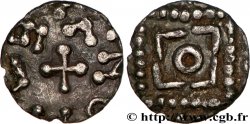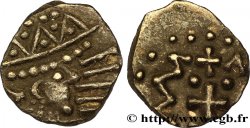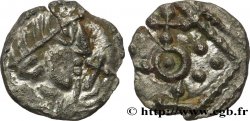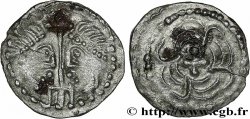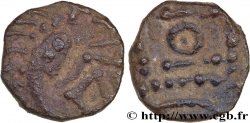v41_1674 - INGHILTERRA - ANGLOSASSONE Sceat au porc-épic et à l’A croiseté
MONNAIES 41 (2009)
起拍价 : 350.00 €
估价 : 600.00 €
未售出的物品
起拍价 : 350.00 €
估价 : 600.00 €
未售出的物品
种类 Sceat au porc-épic et à l’A croiseté
日期: c. 710-760
材质 silver
直径 12,5 mm
模子方针 9 h.
重量 0,46 g.
稀少度 UNIQUE
关于品相的说明
Monnaie très légère sur un flan relativement large, mais très fin, comme dédoublé. Types centrés et presque complets, avec une agréable patine grise et irisée
出版目录中的项代码 :
正面
正面的文字 ANÉPIGRAPHE.
正面的说明书 Tête très stylisée à droite, composée d’un croissant vertical et des mèches de cheveux hirsutes en arrière ; une croisette en guise de visage.
背面
背面的文字 ANÉPIGRAPHE.
背面的说明书 Grand A croiseté, entre deux croisettes.
评论
S’il est possible de reconnaitre une extrême simplification de types plus traditionnels au droit, le revers présente un A croiseté. Si le A croiseté est assez largement représenté dans le monnayage mérovingien, il est très rare dans le monnayage anglo-saxon (notons cependant la monnaie W100 reproduite par T. Abramson avec un A croiseté décrit comme un monogramme de Marseille et considéré comme un denier “anglo-merovingien” de la série W).
S’agit-il d’une frappe mérovingienne s’inspirant d’un sceat. Faut-il rappeler que les sceat circulaient largement dans toute la Gaule ? Ou alors s’agit-il d’un sceat reprenant un type de revers typiquement mérovingien ?
Quoi qu’il en soit, ce denier ou sceat semble manquer à toutes les publications sur le sujet.
S’agit-il d’une frappe mérovingienne s’inspirant d’un sceat. Faut-il rappeler que les sceat circulaient largement dans toute la Gaule ? Ou alors s’agit-il d’un sceat reprenant un type de revers typiquement mérovingien ?
Quoi qu’il en soit, ce denier ou sceat semble manquer à toutes les publications sur le sujet.







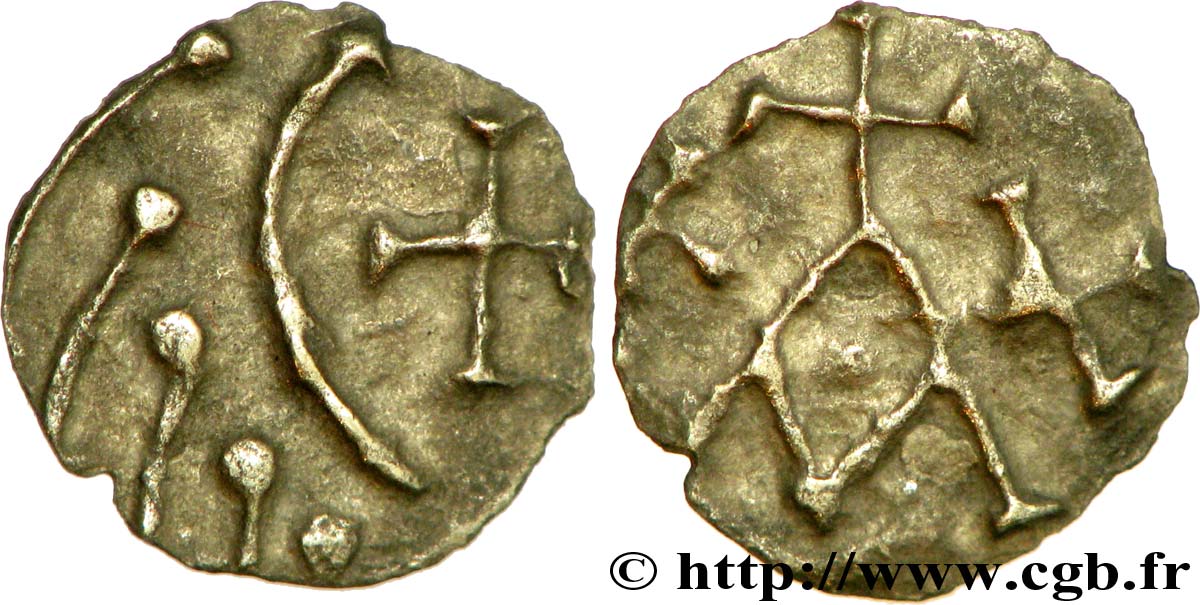
 对产品描述纠错
对产品描述纠错 打印
打印 分享我的选择
分享我的选择 提问
提问 Consign / sell
Consign / sell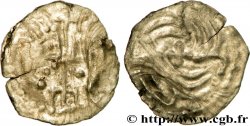
 产品介绍
产品介绍